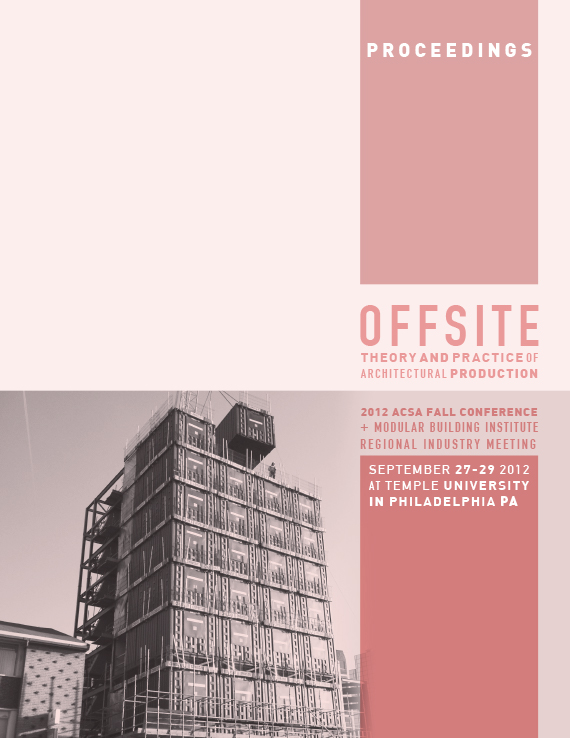Author(s): Carmen Trudell
Prefabrication in architecture holds many promises for reduced material consumptionand reduced energy consumption. This we all know well as it hasbeen the promise since the days of Buckminster Fuller, the Metabolists, andCharles and Ray Eames just to name just a few examples. The impact that prefabricationcould have on human health has not been explored as deeply as thefirst two environmental imperatives. Indoor air quality (IAQ) is a compoundedissue that if properly addressed through design and construction could have atwo-fold benefit. By alleviating the burden of poor indoor air quality, we wouldboth promote healthier occupants and reduce the demand on our heating andcooling systems thereby reducing building use energy.There are two methods by which prefabrication can positively affect indoorair quality. First is by prevention of off gassing by materials into an enclosedspace meant for human occupation. Virtually all plastics, particle boards andother wood composites, adhesives, coatings, and floorings release volatile organiccompounds (VOCs) such as formaldehyde and toluene. Many of theseVOCs have been linked to respiratory ailments, nervous-system degradation,and cancer. Due to the extreme control, and the ability for designers to be fullyengaged in a prefabrication construction process, toxic materials can betterbe avoided. Also many materials off gas VOCs for a very short duration afterinstallation and then are no longer harmful. Off-site fabrication can addressthis time lag in the cases where a suitable non-toxic material is not availableby applying these materials in an environment where proper precautions canbe in place for the appropriation time period.The second way that prefabrication can address the subject of indoor air qualityis by allowing the building materials themselves to actually destroy harmfultoxins. Several case studies, including original works by the author, willdemonstrate how modular wall systems can successfully integrate air cleaning.A test case sited in Cairo, Egypt uses three different types of air remediatingmodules for three different scales of pollutants. The modules addressparticulates (sand storms), gasses (VOCs and other combustion gasses), andheat. These modules can be fabricated from a myriad of ceramics includingsoils, clay, and concrete in a process that has negligible material waste,and yet produces a beautiful and controlled product. The control affordedby off-site manufacturing is essential for these high-performance modules asthe geometries needed to perform on-site particulate separation, for example,is complex and requires highly skilled craftsman to produce. Yet, once theformwork has been created and calibrated to the specific range of particlesizes, the molds can be used repeatedly furthering the material efficiency ofthe production system.A tipping point exists where off-site fabrication will undoubtedly prevail as asuperior method of constructing buildings. Inclusion of human health performancecriteria into the milieu of issues that this method of construction canaddress will only help push us toward this tipping point.
Volume Editors
John Quale, Rashida Ng & Ryan E. Smith
ISBN
978-0-935502-85-5

 Study Architecture
Study Architecture  ProPEL
ProPEL 
